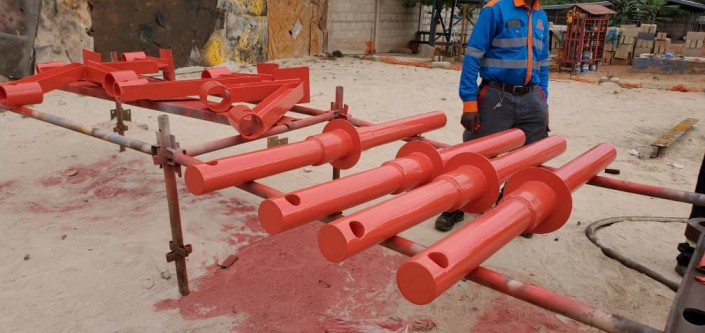Sandblasting is a crucial surface preparation process in **engineering and industrial applications**, used to clean, smooth, or roughen surfaces by propelling abrasive materials at high speeds. This technique enhances adhesion for coatings, removes contaminants, and extends the lifespan of structures.
Why is Sandblasting Important?
Sandblasting offers several engineering benefits, including:
- 🔹 **Surface Preparation** – Ensures proper adhesion for paints and coatings.
- 🛡 **Corrosion Removal** – Eliminates rust and contaminants from metal surfaces.
- 🔧 **Restoration** – Revitalizes aged structures, machinery, and equipment.
- 📉 **Cost-Efficiency** – Reduces maintenance and improves equipment longevity.
Types of Sandblasting
Different types of sandblasting are used in engineering, including:
- ⚙ **Dry Sandblasting** – High-pressure abrasive blasting for cleaning and surface roughening.
- 💦 **Wet Sandblasting** – Uses water to reduce dust and improve safety.
- 🌱 **Soda Blasting** – A gentler alternative using sodium bicarbonate for delicate surfaces.
- 🛠 **Bead Blasting** – Uses glass beads for a smooth, polished finish.
Applications of Sandblasting in Engineering
Sandblasting is widely used in various engineering industries:
- 🏭 **Manufacturing & Fabrication** – Prepares metal surfaces for welding and painting.
- 🏗 **Construction & Infrastructure** – Cleans concrete and steel structures before coating.
- 🚢 **Shipbuilding & Marine** – Removes rust and old paint from ships for maintenance.
- 🚘 **Automotive Industry** – Strips old paint and cleans car parts before refinishing.
Conclusion
Sandblasting is a vital **engineering technique** that enhances **surface durability, performance, and efficiency**. It plays a key role in metal fabrication, construction, and industrial maintenance by providing a **clean and corrosion-resistant finish**.
